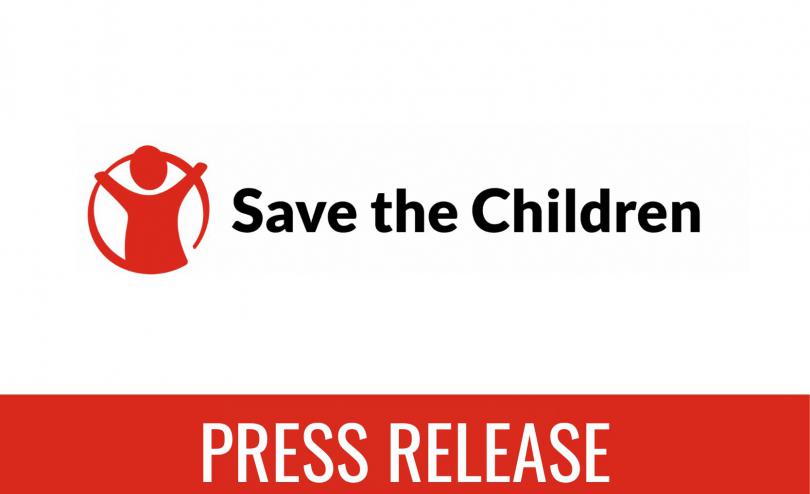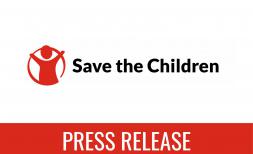Nearly half of children in Sudan set to go hungry as conflict stops farming

KHARTOUM, 9 June 2023 – Over 9 million children in Sudan – just under half of all children in the country[i] – will face severe food shortages in coming months due to conflict disrupting crop production, said Save the Children.
This is an increase of 1.7 million children facing hunger since fighting flared up two months ago, when already 7.6 million children were experiencing food shortages. The increase of 22% in just two months without a correlating increase in support is going to lead to more suffering and young lives lost, said the aid agency.
The month of May typically represents the start of the planting season in Sudan, when farmers take out small loans, purchase seeds, and plant crops to yield harvests in October and November. These crops form the basis of all family meals throughout the winter, when harvests are scarce.
The conflict has forced thousands of farmers off their land, and the collapse of the banking system has drastically reduced the availability of loans. Many agricultural companies that usually sell fertilizer and pesticides have shut down, and a lack of fuel makes it impossible for farmers to operate tractors and plows.
The price of a local food basket, which was already 28% higher than normal in March 2023, is expected to increase by a further 25% in the next three to six months, if the conflict continues. Staple grain prices are also expected to increase by between 200-700 % over the coming year, compared to the five year average.
Save the Children said this crisis could cost more young lives as families struggle to put food on the table, with Sudan already facing one of the highest rates of food insecurity and malnutrition in the world.
Mohmed, 58, is a farmer in the Red Sea region of Sudan who lives with his son, daughters and nine grandchildren, all of whom rely on his income. He usually grows millet, okra and pigeon peas. The region is more secure than other areas of Sudan, but this year, Mohmed will be unable to plant his crops as planned. He said:
“At the moment I don’t have access to any work. At this time of year, myself and other farmers usually work as laborers in the main port at Port Sudan or other nearby cities, but due to insecurity there is very limited movement and no work in the main port.”
“Without a source of income, it’s difficult to afford the tools needed for farming, especially now prices have increased. Without support the agricultural season will definitely fail, which is worrying as people depend on locally grown food.”
Adil Abdelrahman, School Meal Programme coordinator at Save the Children in Sudan, said:
“There’s no doubt that the potential for cultivation and thus the overall food stock in Sudan will drastically shrink – in a country where already 12 million people were living in severe food insecurity and over half a million children facing severe acute malnutrition.
“Local farmers are critical in the country’s food chain and provide most of the food consumed in Sudan. Yet it is looking more likely that farmers will not cultivate their farms this year, causing a huge deep in the overall food basket and massive food shortages across the country."
Arif Noor, Country Director for Save the Children in Sudan, said:
“Most families in Sudan eat food that has been locally produced. This conflict is decimating the production systems which bring that food to the table. We are seeing land lying fallow as farmers flee with their families to safety. With the precious planting window rapidly closing, if we don’t see security and peace come to Sudan soon, the impact of this conflict will be felt in children’s stomachs.”
With an estimated 14 million people displaced by the fighting, Save the Children is calling on the international community to commit the funding and resources to prepare for a large-scale response to meet critical needs both in Sudan and in neighbouring countries, including to local and national organisations providing frontline response.
Currently Save the Children is supporting children and their families across five states (Red Sea, Kordofan, Gedaref, Sennar, Blue Nile), providing health, nutrition, education, child protection and food security and livelihoods support. The organisation is also providing internally displaced people in Gezira state, 50 miles south of Khartoum, with child protection activities, emergency medical treatment and essential hygiene items. Save the Children is also supporting refugees from Sudan in Egypt and South Sudan.
Save the Children has worked in Sudan since 1983. In 2022, Save the Children directly reached 2.1 million people, with 1.5 million of them children, with programming focused on child protection, access to quality education, health and nutrition support and responding to emergencies.
ENDS
[i] Sudan has a population of 49 million population. Around 47% - or 23 million - of the population are children. According to the latest Humanitarian Response Plan, the number of people across the country experiencing food insecurity will increase from 16.2 million to 19.9 million as a result of the conflict. This includes an increase from 7.6 million to 9.3 million children, or nearly half of the country’s child population.
-----------------------------------------------------------------------------------------------------------------------------------------------------
For further enquiries please contact:
Delfhin Mugo, Regional Media Manager: Delfhin.Mugo@savethechildren.org
Emily Wight, Global Media Manager: Emily.Wight@savethechildren.org
Our media out of hours (BST) contact is media@savethechildren.org.uk / +44(0)7831 650409
Please also check our Twitter account @Save_GlobalNews for news alerts, quotes, statements and location Vlogs.




